Trincomalee is home to a wide variety of birds, from migratory shorebirds to endemic species that are found only in this area. The unique geography of Trincomalee, with its coastlines, wetlands, lagoons, and forests, makes it an ideal habitat for many species of birds.
More than 120 species of birds have been recorded here, including some rare and endangered species. Many of these birds are of great ecological importance, providing vital services such as seed dispersal, pest control, and pollination.
Trincomalee is a great place for birdwatching, with a variety of habitats to explore, and plenty of opportunities to catch a glimpse of some of these amazing birds.
1. Sri Lanka Junglefowl
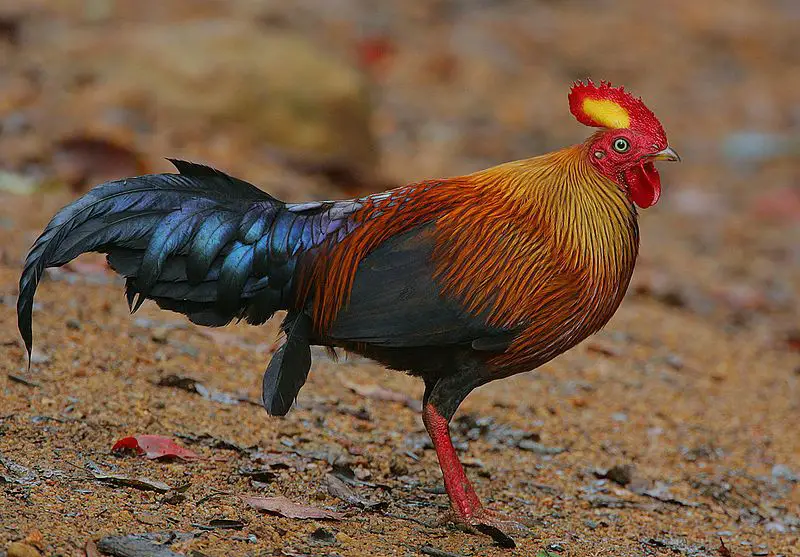
The Sri Lankan junglefowl is a species of bird that is native to Sri Lanka and is the country’s national bird. It is part of the Galliformes order of birds, which includes grouse, pheasants, and chickens.
The Sri Lankan junglefowl is closely related to the red junglefowl, which is the wild ancestor of the domesticated chicken.
The Sri Lankan junglefowl is sometimes referred to as the Ceylon junglefowl or Lafayette’s junglefowl in honor of the French general who discovered the species in Sri Lanka.
The Sri Lankan junglefowl is found in a variety of habitats across the country, including rainforests, scrublands, and grasslands. It has a distinctive coloring, with a red-orange body, black tail, and bright yellow head and wings.
The male also has a bright red and blue throat patch. The Sri Lankan junglefowl is omnivorous, feeding on insects, grains, berries, and seeds. The Sri Lankan junglefowl plays an important role in the country’s culture and mythology.
It is featured in many traditional Sri Lankan folk stories and is associated with the god Murugan. The species is still hunted for food, although it is protected by law in Sri Lanka.
Although the Sri Lankan junglefowl is not considered threatened, it is still important to conserve this species as it plays an integral role in Sri Lanka’s natural ecosystem and cultural heritage.
| Kingdom | Animalia |
| Phylum | Chordata |
| Class | Aves |
| Order | Galliformes |
| Family | Phasianidae |
| Genus | Gallus |
| Species | G. lafayettii |
2. Green-billed Coucal
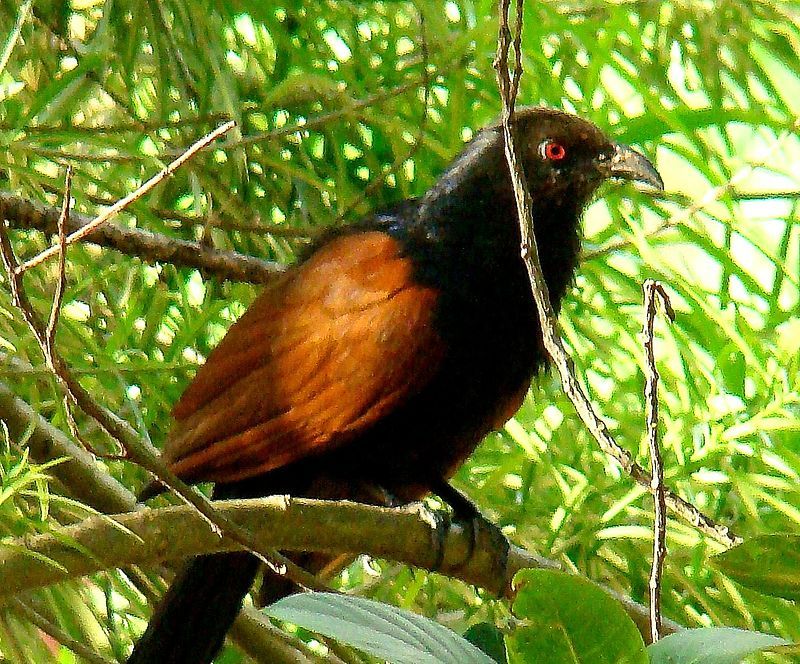
The green-billed coucal is a species of cuckoo bird native to the wet zone of Sri Lanka. It is classified as Vulnerable on the IUCN Red List, as the small population has been in decline due to deforestation and destruction of its natural habitat.
The green-billed coucal is most commonly found in the tall rainforests of southwest Sri Lanka, where it builds its nests in bushes. Its diet consists mainly of insects, and it is known to be territorial, chasing off any other birds that come too close to its nesting area.
The species is also threatened by hunting and capture for the pet trade, making its conservation increasingly important. Despite the challenges it faces, the green-billed coucal population is slowly recovering in some areas, thanks to conservation efforts.
| Kingdom | Animalia |
| Phylum | Chordata |
| Class | Aves |
| Order | Cuculiformes |
| Family | Cuculidae |
| Genus | Centropus |
| Species | C. chlororhynchos |
3. Red-faced Malkoha
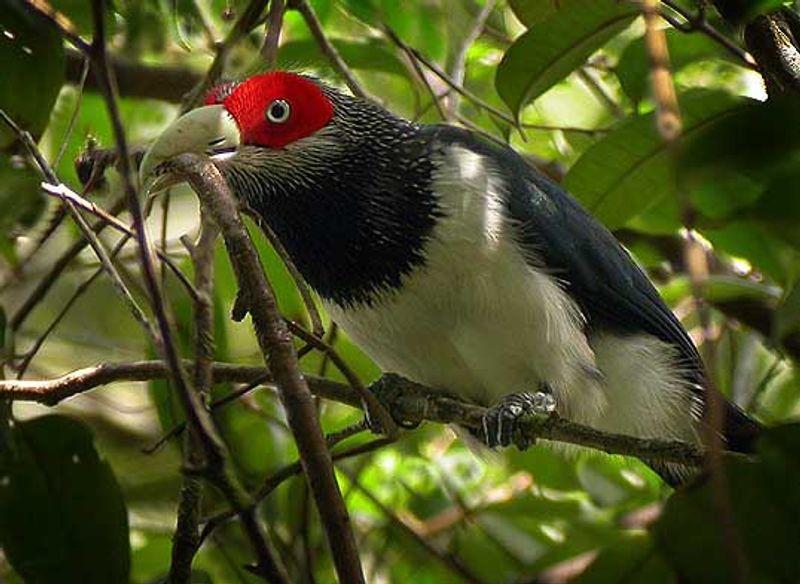
The red-faced malkoha is a unique species of bird that belongs to the Cuculiformes, an order of birds commonly referred to as cuckoos. It is only found in the country of Sri Lanka, meaning that it is an endemic species to that area.
The malkoha is a medium-sized bird, with a bright red face, and it has long, slender wings and a long tail. The species feeds on insects, fruits, and other small organisms, and it is primarily found in forests and woodlands.
It nests in tree cavities, usually in the upper canopy, and its call is a unique, loud, and ringing sound. The red-faced malkoha is a beautiful bird, and its presence is an important part of the local biodiversity in Sri Lanka.
| Kingdom | Animalia |
| Phylum | Chordata |
| Class | Aves |
| Order | Cuculiformes |
| Family | Cuculidae |
| Genus | Phaenicophaeus |
| Species | P. pyrrhocephalus |
4. Spotted Dove
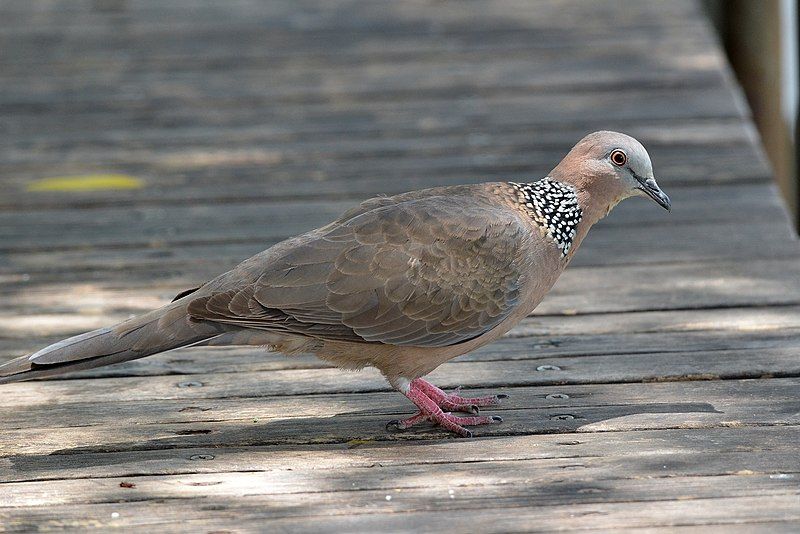
The Spotted Dove is a small, long-tailed species of pigeon that is native to the Indian subcontinent and Southeast Asia. It is a common breeding bird in these regions, with large populations across its native range.
In recent years, the species has been introduced to many other parts of the world and has established feral populations in some of these areas. The Spotted Dove is easily identifiable by its distinctive spotted pattern on its wings and back.
It has a quiet, cooing call and is usually found in open forest and scrub areas. The Spotted Dove feeds mainly on seeds, but will also eat small fruits and insects. Its diet is varied and adaptable, allowing it to thrive in a variety of habitats.
| Kingdom | Animalia |
| Phylum | Chordata |
| Class | Aves |
| Order | Columbiformes |
| Family | Columbidae |
| Genus | Spilopelia |
| Species | S. chinensis |
5. Lovebirds
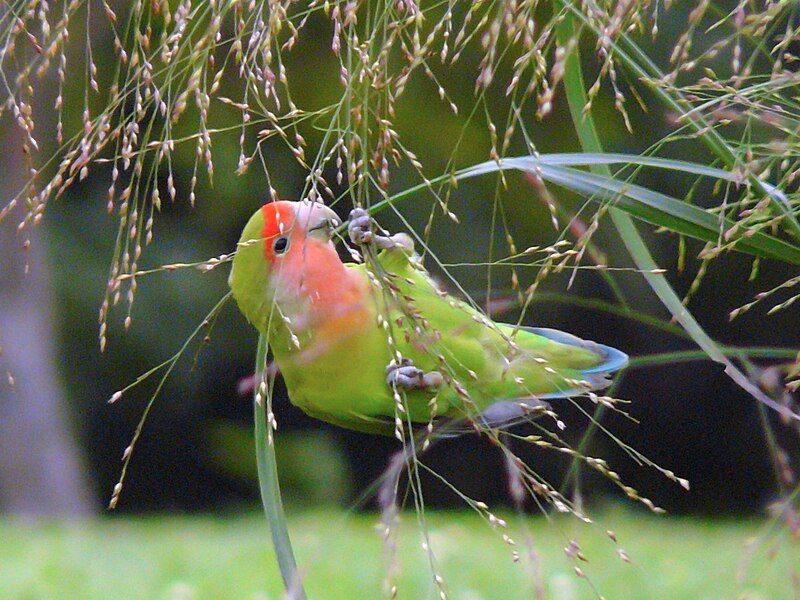
Lovebird is a term used to describe a group of nine species of parrots that belong to the genus Agapornis. These animals are part of the Old World parrot family Psittaculidae and are native to the African continent.
The grey-headed lovebird is the only species native to the African island of Madagascar, while the other eight species are found on the mainland. Lovebirds are small birds, and most species are brightly colored.
They are social animals and can typically be seen in small flocks, often around water sources. Lovebirds are popular in the pet trade due to their inquisitive nature and their ability to bond with humans. They enjoy playing with toys and can live up to 15 years in captivity.
| Kingdom | Animalia |
| Phylum | Chordata |
| Class | Aves |
| Order | Psittaciformes |
| Family | Psittaculidae |
| Genus | Agapornis |
6. Rock Dove
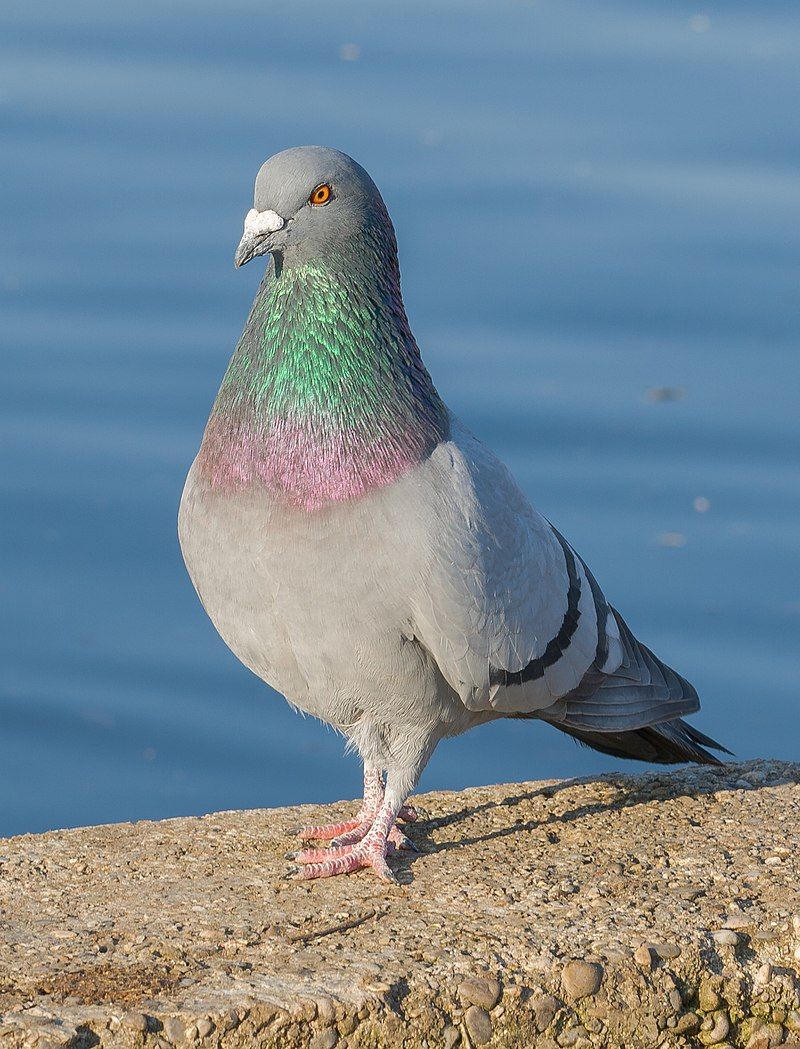
The rock dove, rock pigeon, or common pigeon is a species of bird found in the family Columbidae. It is a common sight around the world and is often referred to simply as “pigeon”.
This species is the ancestor of the domestic pigeon, which has been bred for thousands of years to have a variety of different colors and shapes. As a result of domesticated pigeons escaping, the population of feral pigeons has risen dramatically around the world.
Feral pigeons are wild birds that are descended from domestic pigeons and can be found in cities, parks, and other areas populated by humans.
| Kingdom | Animalia |
| Phylum | Chordata |
| Class | Aves |
| Order | Columbiformes |
| Family | Columbidae |
| Genus | Columba |
| Species | C. livia |
7. Indian Peafowl
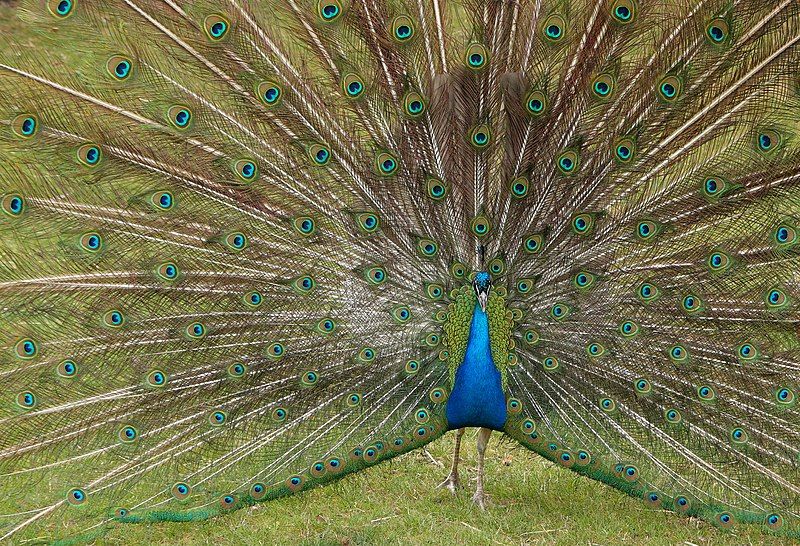
The Indian peafowl is a species of peafowl native to the Indian subcontinent. It is also known by the names common peafowl and blue peafowl. The Indian peafowl is a brightly colored bird with a long tail of iridescent feathers. The bird is also famous for its distinctive call.
The male Indian peafowl is especially well known for its impressive display of colorful feathers. The Indian peafowl is a highly adaptable bird and has been introduced to many other countries outside of its native range.
This has allowed the species to expand its range beyond the Indian subcontinent and become a common sight in many regions. The Indian peafowl has been introduced to parts of North America, Europe, Asia, and even parts of Australia.
The species has become so widespread that it is now listed as a species of least concern on the IUCN Red List.The Indian peafowl is an important species in Indian culture. It is the national bird of India and is featured in many ancient texts and artworks.
The bird is also known to be a symbol of love, divinity, and joy. The bird is also a popular pet, and many people keep them for their beautiful and unique display. The Indian peafowl is an important species that is both culturally and ecologically significant.
Its introduction to other countries has allowed it to expand its range and become a common sight in many different parts of the world. It is also an important symbol in Indian culture and will likely continue to be appreciated and admired for many years to come.
| Kingdom | Animalia |
| Phylum | Chordata |
| Class | Aves |
| Order | Galliformes |
| Family | Phasianidae |
| Genus | Pavo |
| Species | P. cristatus |
8. Greater Coucal
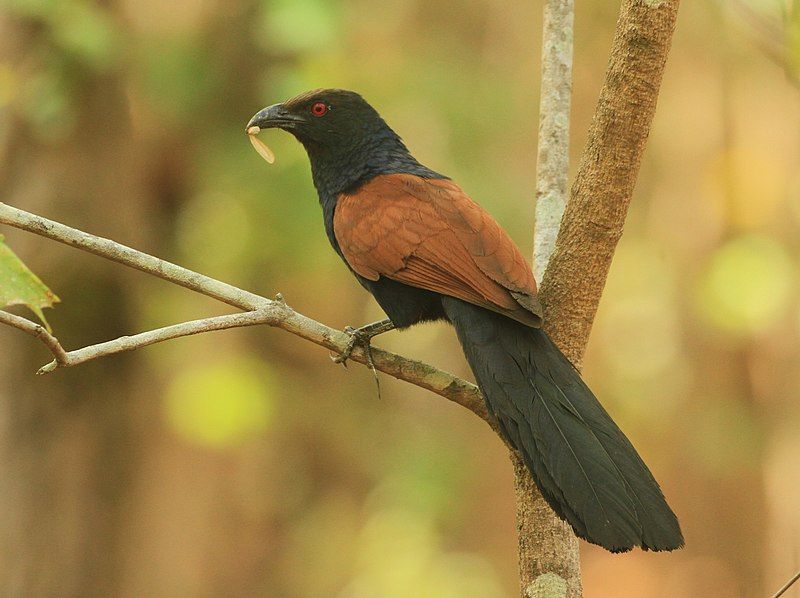
The greater coucal, also known as the crow pheasant, is a species of bird that belongs to the Cuculiformes order, which is a group of non-parasitic cuckoos.
These birds are native to the Indian Subcontinent and Southeast Asia, and they can be divided into several different subspecies, some of which are even treated as distinct species in their own right.
The greater coucal is a relatively large bird that is usually quite easy to spot due to its size and color. Its feathers are primarily black, with some brown or chestnut markings on the wings and tail.
It has a long tail that can help it maneuver through the air, and its powerful legs and feet make it an adept climber. Its diet consists of insects, small mammals, and some fruits and seeds. The greater coucal is a solitary bird, and it is mostly active during the day.
It is known for its loud and distinctive call, which has been described as a low-pitched croak and can often be heard from far away.
| Kingdom | Animalia |
| Phylum | Chordata |
| Class | Aves |
| Order | Cuculiformes |
| Family | Cuculidae |
| Genus | Centropus |
| Species | C. sinensis |
9. Asian Koel
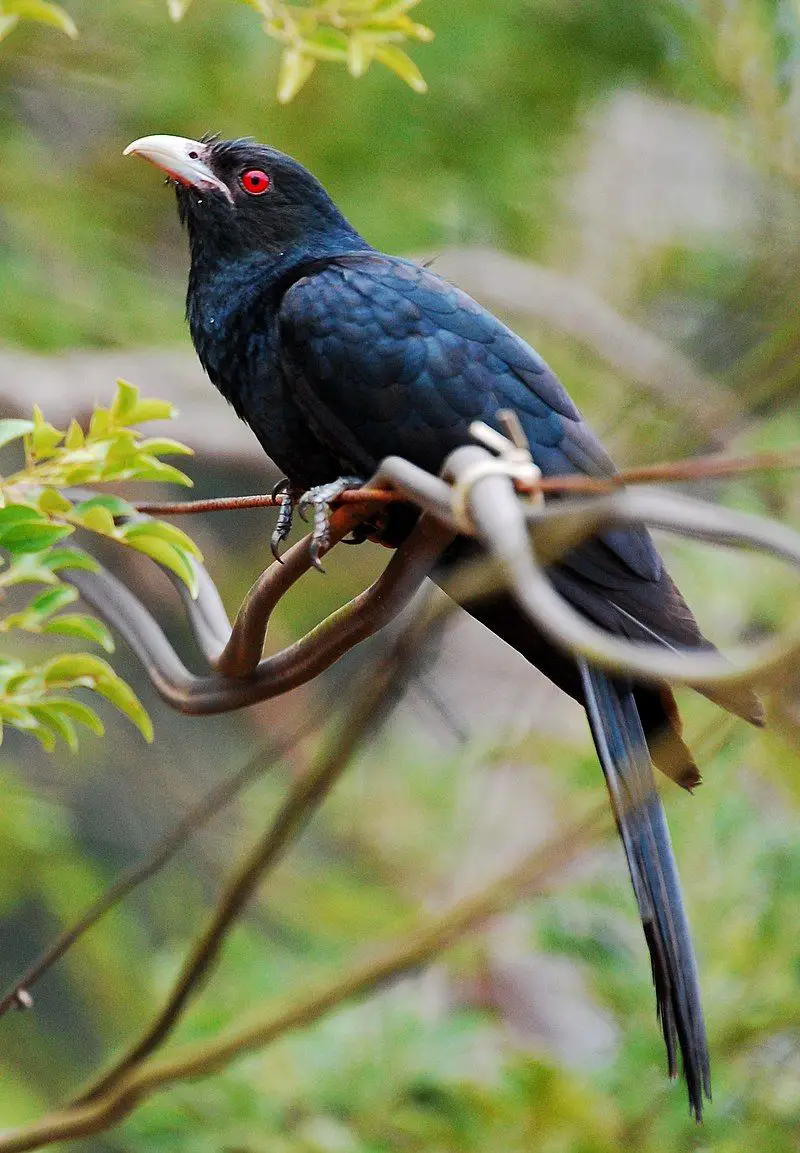
The Asian koel is a species of bird belonging to the Cuculiformes, which is the order of cuckoos. It is native to the Indian Subcontinent, China, and Southeast Asia. It is closely related to two other species of koels, known as the black-billed koel and the Pacific koel.
These two species are sometimes classified as subspecies of the Asian koel, rather than as separate species in their own right. The Asian koel is a medium-sized bird, typically measuring around 30-33 cm in length.
It has black or dark brown plumage, with a distinctive white patch on its rump. Its wings are broad and its tail is long and pointed.
It has a strong, distinctive call, which is often heard in the early morning. The Asian koel is a solitary bird and can be found in a variety of habitats, including forests, gardens, and open woodlands.
It feeds mainly on fruit, such as figs and berries, but will also take insects.
During the breeding season, the female lays her eggs in the nests of other species, typically crows, and the chicks are raised by the foster parents. The Asian koel is an important bird in many cultures and is often associated with love and romance.
It is also featured in a number of folk tales and myths, as well as being one of the symbols of the Indian state of Kerala.
| Kingdom | Animalia |
| Phylum | Chordata |
| Class | Aves |
| Order | Cuculiformes |
| Family | Cuculidae |
| Genus | Eudynamys |
| Species | E. scolopaceus |
10. Lesser Whistling Duck
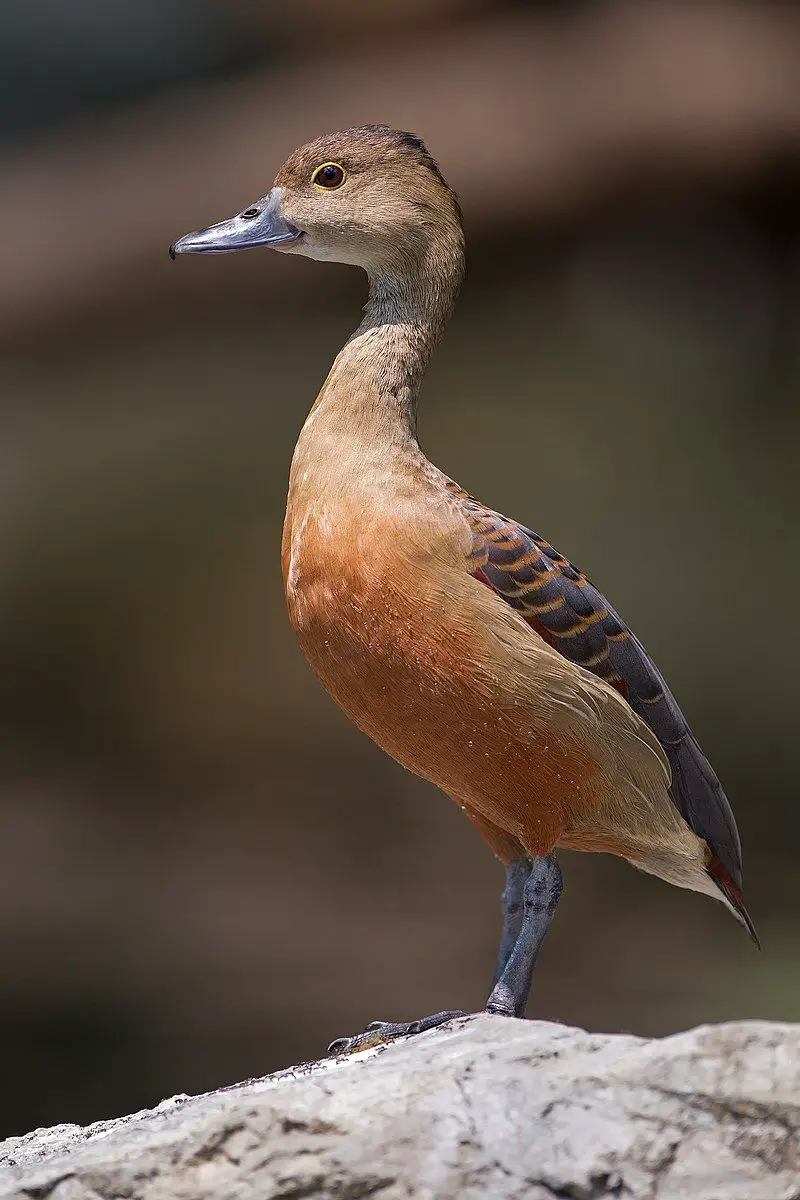
The lesser whistling duck, also known as Indian whistling duck or lesser whistling teal, is a species of duck that is native to the Indian subcontinent and Southeast Asia. It is a medium-sized duck, with a body length of about 16 inches, and a wingspan of about 23 inches.
It is easily identifiable by its distinctive whistling call. The lesser whistling duck is a nocturnal feeder, typically foraging for food in the evening and at night. During the day, they can usually be found in large flocks around lakes, marshes, and wet paddy fields.
Its diet consists of aquatic vegetation, insects, and small fish. The lesser whistling duck is monogamous, typically mating for life, and laying between six and eleven eggs in a clutch. The female incubates the eggs for about 24-28 days.
The male and female work together to raise the young, with the female caring for the chicks during the day and the male taking care of them at night. The lesser whistling duck is an important species in its native habitats, providing an important food source for many predators, including owls, hawks, and eagles.
Its population is believed to be stable in most areas, although there are some threats to its survival, including habitat destruction.
| Kingdom | Animalia |
| Phylum | Chordata |
| Class | Aves |
| Order | Anseriformes |
| Family | Anatidae |
| Genus | Dendrocygna |
| Species | D. javanica |
11. Cattle Egret
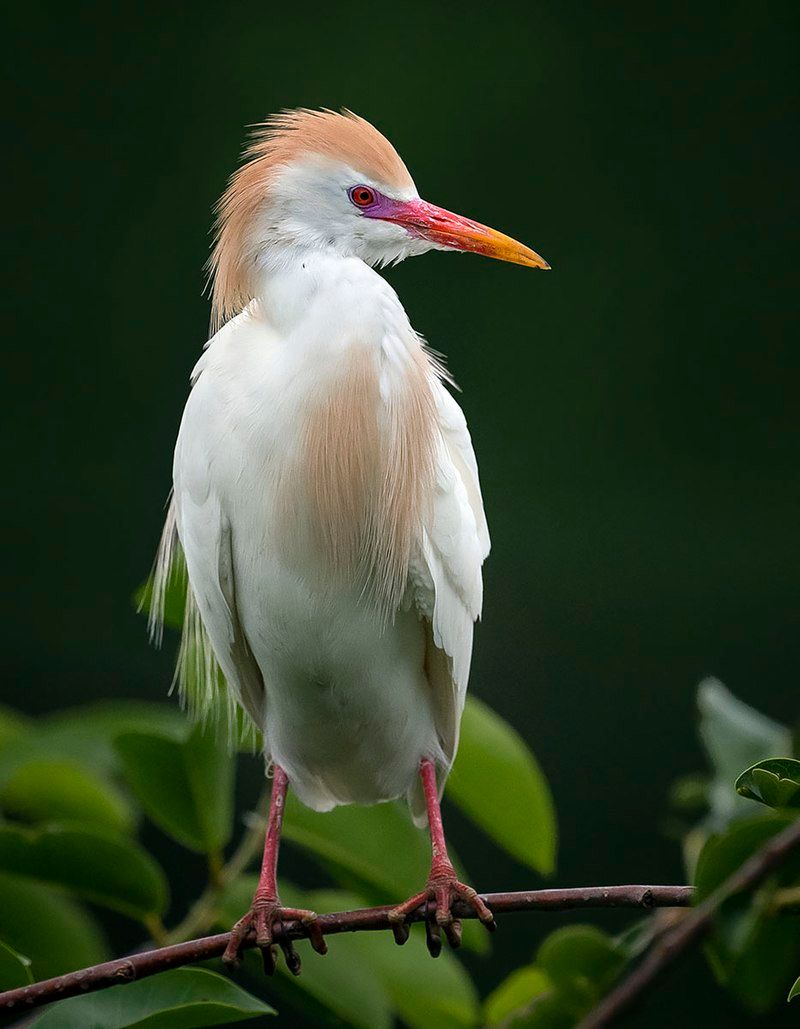
The cattle egret is an extraordinary species of heron found across the globe. It is native to tropic and subtropic regions, as well as warm temperate zones.
This species is the sole member of the monotypic genus Bubulcus, although some experts classify its two subspecies, the western cattle egret and the eastern cattle egret, as distinct species. The cattle egret is a widespread species and is found in virtually any area with shallow, peaceful water.
It prefers to forage in open grasslands and fields, as well as wetlands and marshes. Its habitat also includes woodlands, pastures, and agricultural fields. The cattle egret is a medium-sized heron, with a white body and a yellowish-orange bill. It has long legs and a short neck.
Its diet consists mainly of insects, but it will also consume small fish, amphibians, reptiles, and small mammals. In addition to its adaptability to a variety of climates and habitats, the cattle egret is also highly tolerant of human disturbance.
This makes it a popular species for birdwatchers and conservationists alike. It is also valued in some cultures for its potential to help with pest control.
| Kingdom | Animalia |
| Phylum | Chordata |
| Class | Aves |
| Order | Pelecaniformes |
| Family | Ardeidae |
| Genus | Bubulcus |
| Species | B. ibis |
12. Garganey
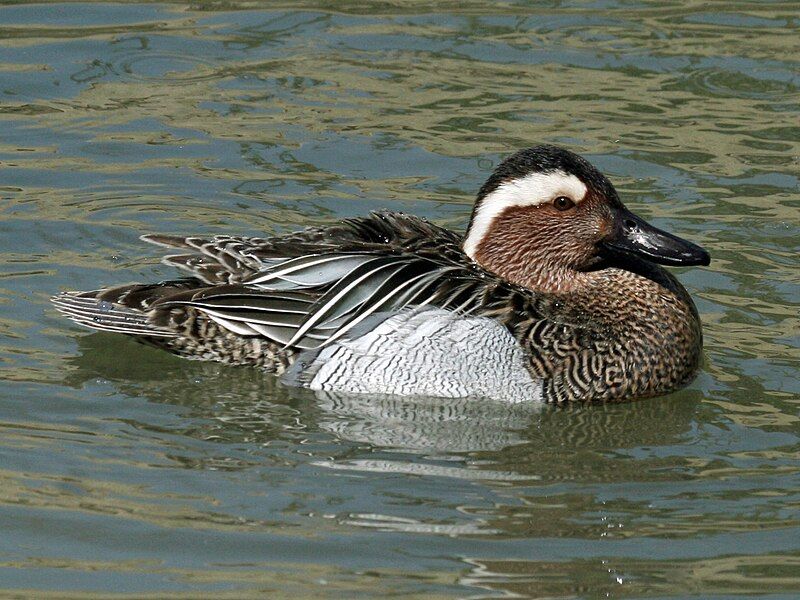
The garganey is a type of small dabbling duck, meaning it feeds in shallow water by tipping forward and upending itself to reach food items below the surface.
It is distributed across much of Europe and the Palearctic region, and is a strictly migratory species, meaning it migrates seasonally over long distances.
During the winter in the Northern Hemisphere, the entire population of garganey ducks move south to Africa, India, Bangladesh, and Australasia. Once there, huge flocks of these birds can be observed in these places.
This migration is a necessary part of the species’ survival, as it ensures that the birds can find safe and adequate food and shelter during the winter months.
The garganey is an important species for conservation efforts, as it serves as an indicator of the health of the environment in its many habitats.
| Kingdom | Animalia |
| Phylum | Chordata |
| Class | Aves |
| Order | Anseriformes |
| Family | Anatidae |
| Genus | Spatula |
| Species | S. querquedula |
13. Indian Swiftlet

Source: ebird.org
The Indian swiftlet is a small species of swift that is commonly found in the hills of Sri Lanka and southwest India. It is a colonial breeder, meaning that it lives and breeds in large groups.
The swiftlet builds its nest by using a half-cup of material, which it attaches to a vertical surface, often in a cave. This type of nest is known as an edible nest swiftlet, and the nests are usually made out of plant material and feathers.
The Indian swiftlet is an important species, as it provides an important food source for humans, and the nests are edible and highly valued by humans. The swiftlet’s nest is also important in traditional Chinese medicine and is used in various products.
The Indian swiftlet is a vital species for the environment and provides an essential ecosystem service.
| Kingdom | Animalia |
| Phylum | Chordata |
| Class | Aves |
| Clade | Strisores |
| Order | Apodiformes |
| Family | Apodidae |
| Genus | Aerodramus |
| Species | A. unicolor |
14. Cotton Pygmy Goose
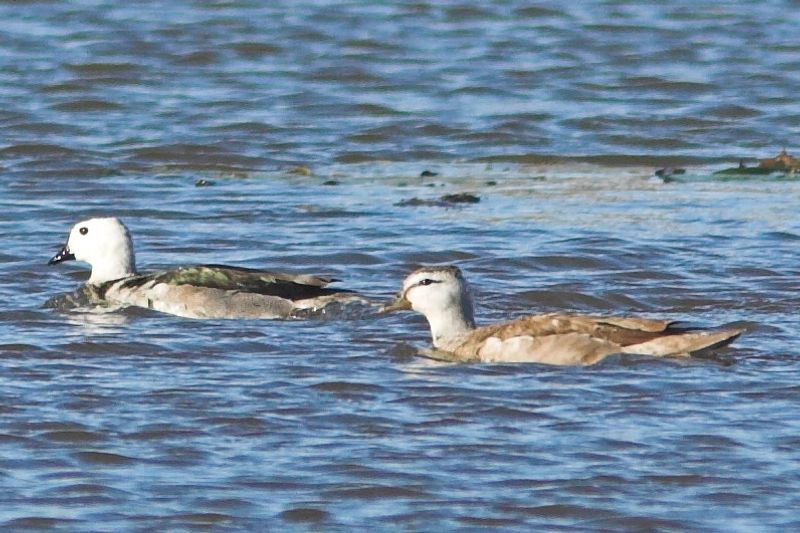
The Cotton Pygmy Goose, also known as the Cotton Teal, is a species of perching duck native to Asia and Southeast Asia. It is relatively small in size and is a seasonal breeder, which means that it breeds during certain times of the year.
The geographical range of the species extends from India and Pakistan in the west to China and Indonesia in the east, and as far south as Queensland in Australia. In some parts of Australia, the species is locally known as the White-quilled Pygmy Goose.
The Cotton Pygmy Goose has a unique plumage, with males being mainly black and white while females are mainly brown and white. They are very social birds and typically form large, noisy flocks.
During the breeding season, they can be found in shallow wetlands and slow-moving rivers, where they feed on a variety of aquatic insects, seeds, and plants. During the non-breeding season, they can be found in open grasslands, paddy fields, and flooded fields.
The Cotton Pygmy Goose is an important species for wetland conservation, as it helps to keep the habitat healthy and provides food for other species. It is also an important species for hunters, as it is a popular game bird in some parts of its range.
The species is classified as Least Concern by the IUCN Red List, due to its large range and stable population.
| Kingdom | Animalia |
| Phylum | Chordata |
| Class | Aves |
| Order | Anseriformes |
| Family | Anatidae |
| Genus | Nettapus |
| Species | N. coromandelianus |
15. Cockatiel
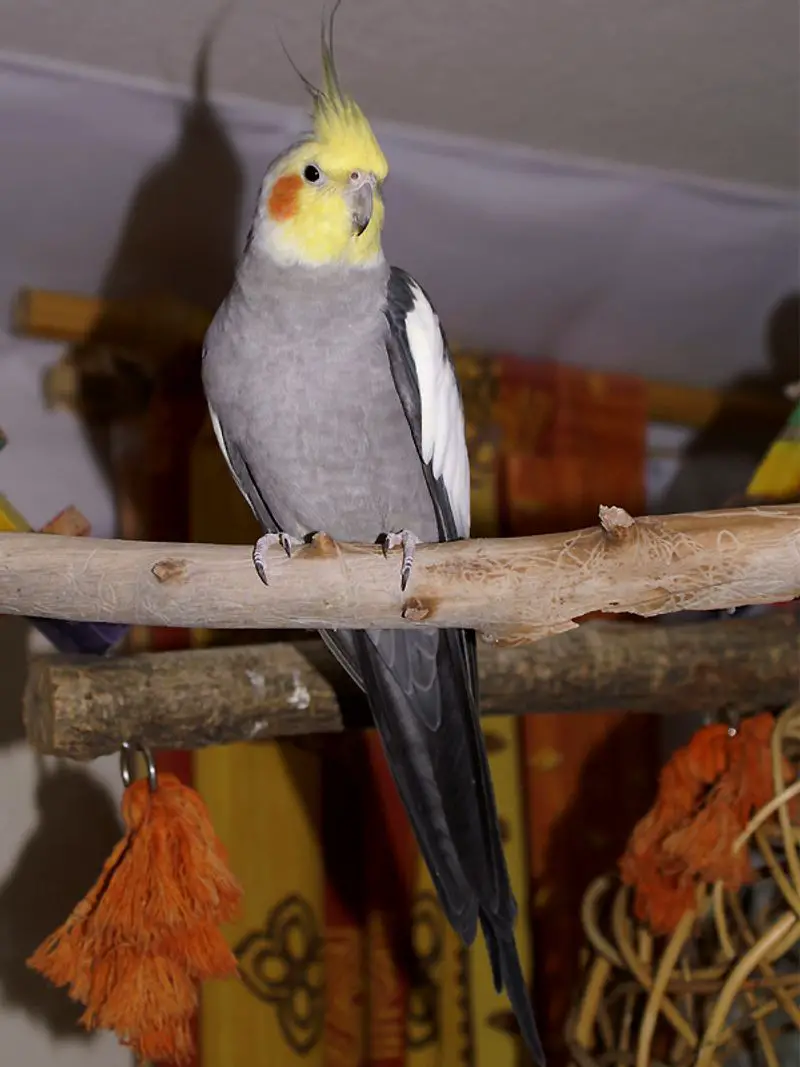
The cockatiel is a popular pet parrot that is native to Australia. It belongs to the cockatoo family and is known by multiple names, such as weero, weiro, or quarrion. It is a medium-sized parrot and is highly sought after by households all around the world.
Not only is it a great companion parrot, but it is also relatively simple to breed. This has contributed to the cockatiel’s popularity, as it is relatively easy for pet owners to care for and raise one.
Additionally, they are relatively social birds and enjoy the company of both their owners and other birds. This has made them a popular choice among households looking for a pet bird.
| Kingdom | Animalia |
| Phylum | Chordata |
| Class | Aves |
| Order | Psittaciformes |
| Family | Cacatuidae |
| Genus | Nymphicus |
| Species | N. hollandicus |
16. Blue-faced Malkoha
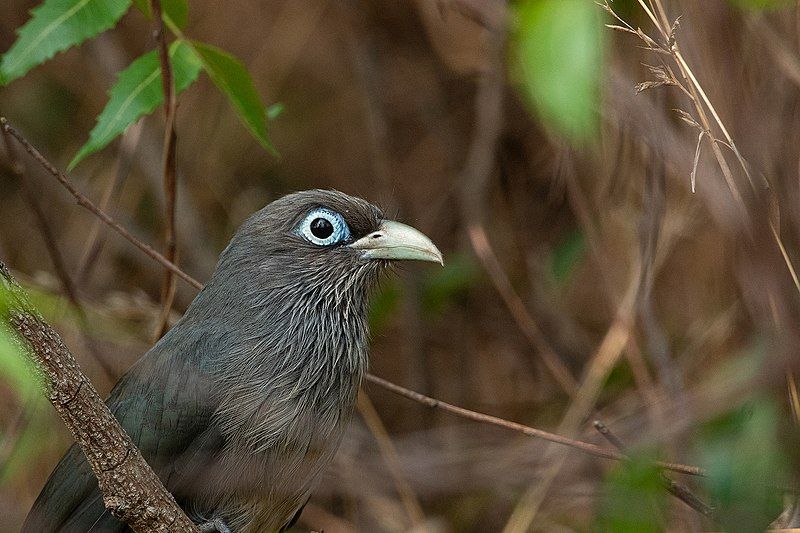
The blue-faced malkoha, also known as the small green-billed malkoha, is a species of cuckoo found in the scrub and deciduous forests of India and Sri Lanka.
It has a distinctive appearance, with blue-grey plumage on its upperparts and a long tail with feathers that have white tips. The malkoha is a non-parasitic species, meaning it does not lay its eggs in other bird’s nests and relies on them to raise its young.
Instead, it builds its own nests and tends to its own eggs and chicks. The malkoha is a medium-sized bird, measuring approximately 35 centimeters in length. Its plumage is usually dark, with its head, neck, and back having a blue-grey hue.
The tail is long and pointed, with the individual feathers having white tips. The wings are brownish-grey in color with black spots.
The bill is light green in color, and the legs and feet are yellowish-brown. The blue-faced malkoha inhabits scrub and deciduous forest habitats, where it feeds on small insects and lizards. It is known to be quite a vocal species, making loud, cackling calls and other noises.
It is also known to be quite a shy bird, preferring to remain in the shadows of the forest rather than displaying itself in open areas. In conclusion, the blue-faced malkoha is a unique bird species that can be found in the scrub and deciduous forests of India and Sri Lanka.
It has a distinctive appearance, with its blue-grey plumage and white-tipped feathers. It is a non-parasitic species, meaning it builds its own nests and tends to its own young.
The malkoha is a shy bird that prefers to remain in the shadows rather than expose itself in open areas, but its loud calls can often be heard echoing through the forest.
| Kingdom | Animalia |
| Phylum | Chordata |
| Class | Aves |
| Order | Cuculiformes |
| Family | Cuculidae |
| Genus | Phaenicophaeus |
| Species | P. viridirostris |
17. Chestnut-winged Cuckoo
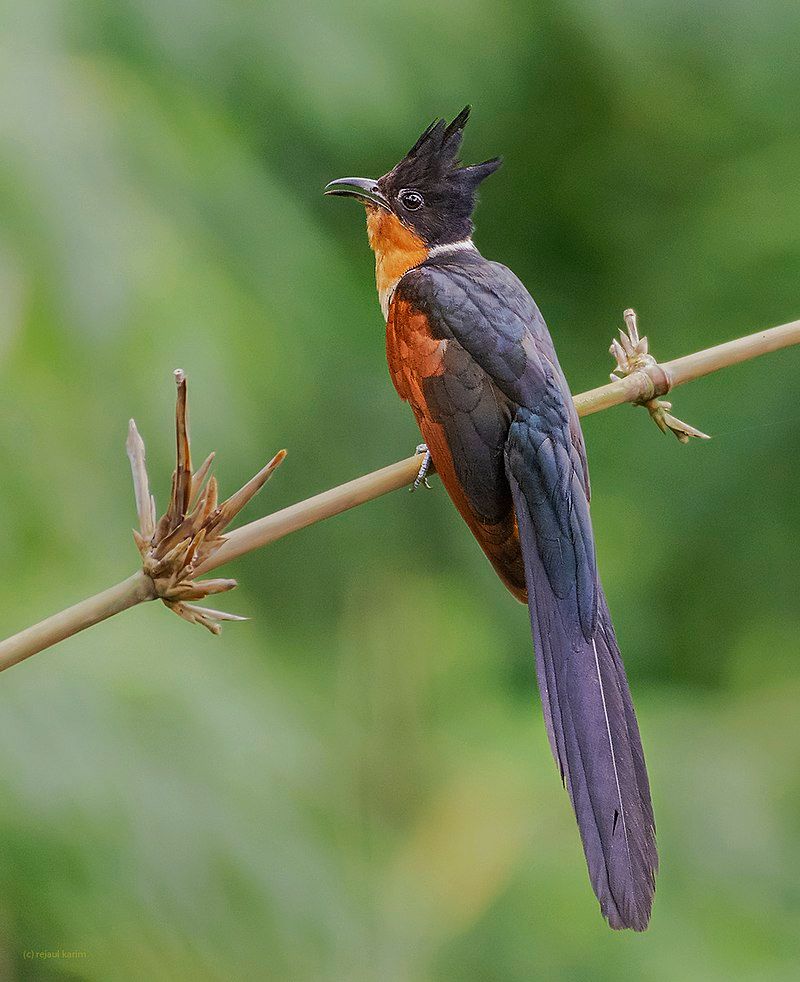
The chestnut-winged cuckoo is a type of cuckoo found in Southeast Asia and some parts of South Asia. Its upperparts are dark and glossy, and its head has a long crest. Its wings are chestnut-colored, and its tail is long, glossy, and black with a graduated tip.
Its throat is rufous, and the underside of its body is dusky. It also has a narrow white half-collar at the nape of its neck. This cuckoo is a striking bird due to its combination of glossy black, chestnut, and white colors.
| Kingdom | Animalia |
| Phylum | Chordata |
| Class | Aves |
| Order | Cuculiformes |
| Family | Cuculidae |
| Genus | Clamator |
| Species | C. coromandus |
18. Orange-breasted Green Pigeon
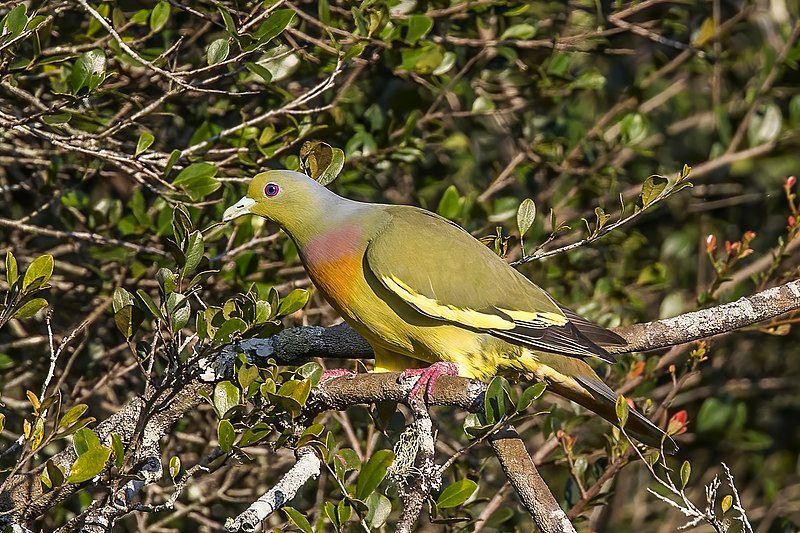
The orange-breasted green pigeon is a species of pigeon that is found across many tropical regions in Asia, from south of the Himalayas to various parts of the Indian Subcontinent and Southeast Asia.
This species is one of several green pigeons, which are all characterized by their green feathers and their diet of small fruit.
When in the wild, they are often found in pairs or small flocks, and in these groups, they will typically move slowly and quietly when foraging on trees for their food..
| Kingdom | Animalia |
| Phylum | Chordata |
| Class | Aves |
| Order | Columbiformes |
| Family | Columbidae |
| Genus | Treron |
| Species | T. bicinctus |
19. Ruddy-breasted Crake
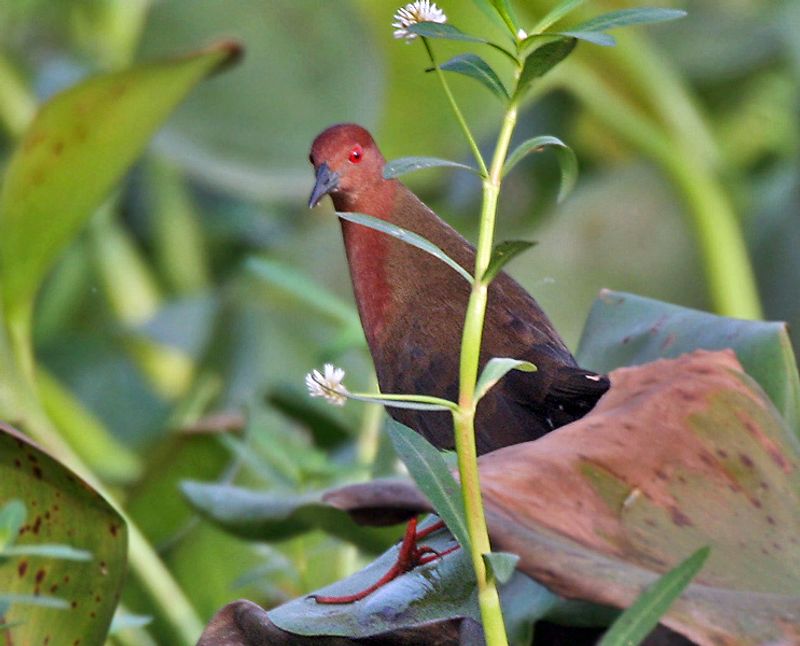
The ruddy-breasted crake, also known as the ruddy crake, is a species of waterbird that belongs to the rail and crake family, Rallidae.
It is a migratory bird that breeds in swamps and other wetland areas across a large swath of Asia, including the Indian subcontinent, China, Japan, and Indonesia.
During the breeding season, this species is characterized by its ruddy-colored chest. The ruddy-breasted crake prefers habitats that are heavily vegetated, such as marshes, swamps, wet meadows, and shallow ponds. They are ground-dwellers, foraging among the vegetation for food.
Their diet consists mainly of insects and other invertebrates, as well as small fish and amphibians. During the non-breeding season, ruddy-breasted crakes are more widespread, sometimes being found in coastal areas, estuaries, and even mangrove swamps.
They tend to form small flocks, and they are very shy and secretive birds, rarely seen out in the open. The ruddy-breasted crake is listed as a species of least concern by the International Union for Conservation of Nature (IUCN).
Although its population is decreasing, it is not considered to be in danger of extinction at this time. Conservation efforts are needed to ensure that this species can continue to thrive.
| Kingdom | Animalia |
| Phylum | Chordata |
| Class | Aves |
| Order | Gruiformes |
| Family | Rallidae |
| Genus | Zapornia |
| Species | Z. fusca |
20. White-breasted Waterhen
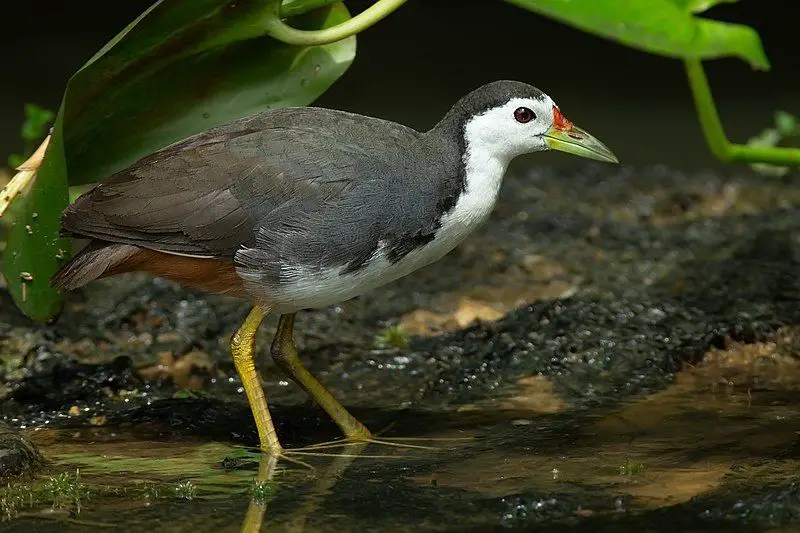
The white-breasted waterhen is a unique species of waterbird belonging to the family of Rallidae. It is native to South and Southeast Asia and can be found in a range of habitats such as freshwater and coastal wetlands.
This species is easily recognizable due to its dark slaty plumage, which stands in sharp contrast to its clean white face, breast, and belly. The white-breasted waterhen is usually seen foraging alone or in pairs, searching for food on the ground or in shallow waters.
It is an omnivorous species, meaning that it can eat both plants and animals. Its diet consists of small insects, crustaceans, molluscs, Worms, amphibians, and small fish.
The white-breasted waterhen is a shy bird that usually prefers to remain hidden in the vegetation, however, it can often be heard making a variety of calls from a distance.
| Kingdom | Animalia |
| Phylum | Chordata |
| Class | Aves |
| Order | Gruiformes |
| Family | Rallidae |
| Genus | Amaurornis |
| Species | A. phoenicurus |
21. Black-winged Stilt
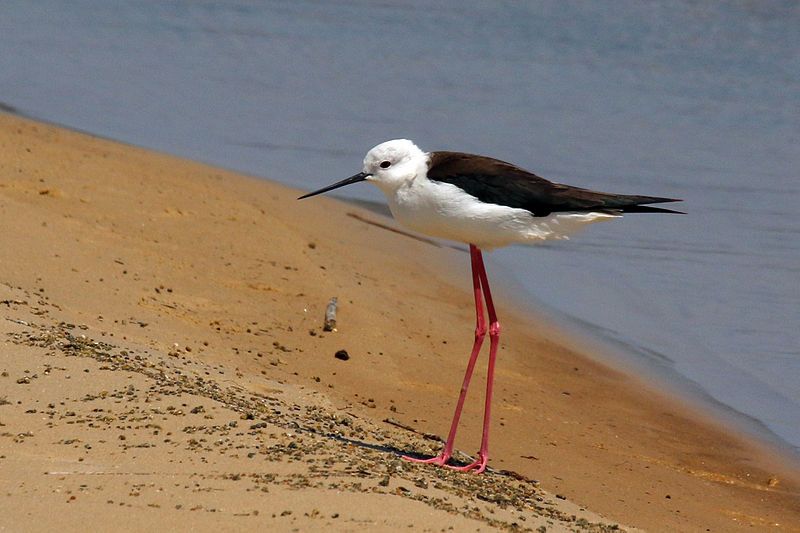
The black-winged stilt is a wading bird found across the globe. It is part of the avocet and stilt family, and is known for its incredibly long legs, which allow it to move fast and efficiently over water and wetland habitats. Its scientific name is H. himantopus.
This single species can be found almost everywhere in the world, making it a truly cosmopolitan species. The black-winged stilt is a common sight in many wetlands, lakes, and ponds, where it can be seen hunting for insects, crustaceans, and worms.
It is usually seen in large flocks and is well-adapted to a wide variety of habitats. They have black heads and wings, with white patches on their wings and back, and a white underside.
The black-winged stilt is an important species in many ecosystems, serving as an indicator species for the health of the environment. Its presence is a sign of a healthy water body and surrounding habitat, and its absence can be a warning sign that something is wrong.
Its presence also helps to maintain a balance in the food chain by preying on small animals and insects. The black-winged stilt is an iconic species and its presence is often celebrated in many countries.
Its beauty and grace make it a popular bird to watch and photograph, and it is also popular in falconry and art. It is a species that is loved and respected by many, and its conservation is of utmost importance for protecting our environment.
| Kingdom | Animalia |
| Phylum | Chordata |
| Class | Aves |
| Order | Charadriiformes |
| Family | Recurvirostridae |
| Genus | Himantopus |
| Species | H. himantopus |
22. Blue-breasted Quail
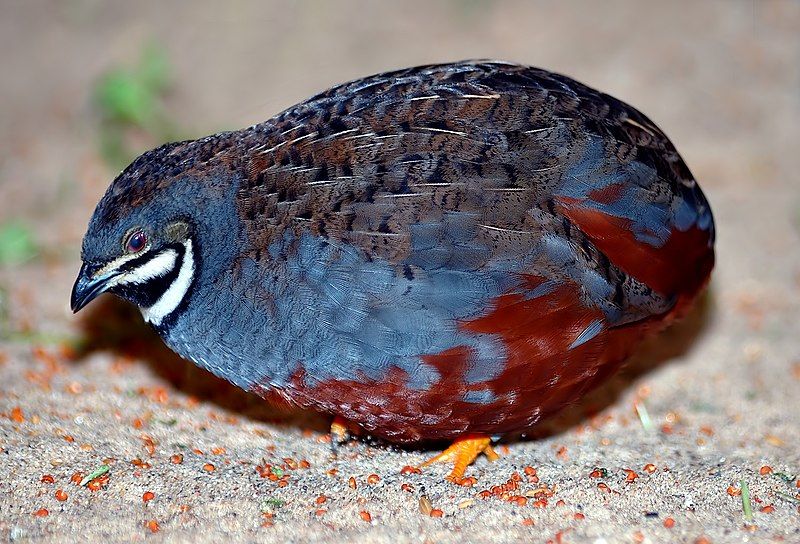
The king quail is a species of quail that belongs to the Old World and is part of the Phasianidae family. It is also known by various other names such as blue-breasted quail, Asian blue quail, Chinese painted quail, or Chung-Chi.
This species of quail is widely distributed and can be found in various parts of Asia and even parts of Australia. It is a small gamebird that has a short, curved bill and a mostly greyish-brown plumage with a blue breast.
It is an omnivore, feeding on various plants, seeds, insects, and other invertebrates. It is a ground-dwelling bird that usually lives in small flocks and is known to have a loud call. The king quail is a popular game bird, hunted for its meat and eggs.
It is also kept as a pet in some parts of the world and is bred for show purposes.
| Kingdom | Animalia |
| Phylum | Chordata |
| Class | Aves |
| Order | Galliformes |
| Family | Phasianidae |
| Genus | Synoicus |
| Species | S. chinensis |
23. Greater Flamingo
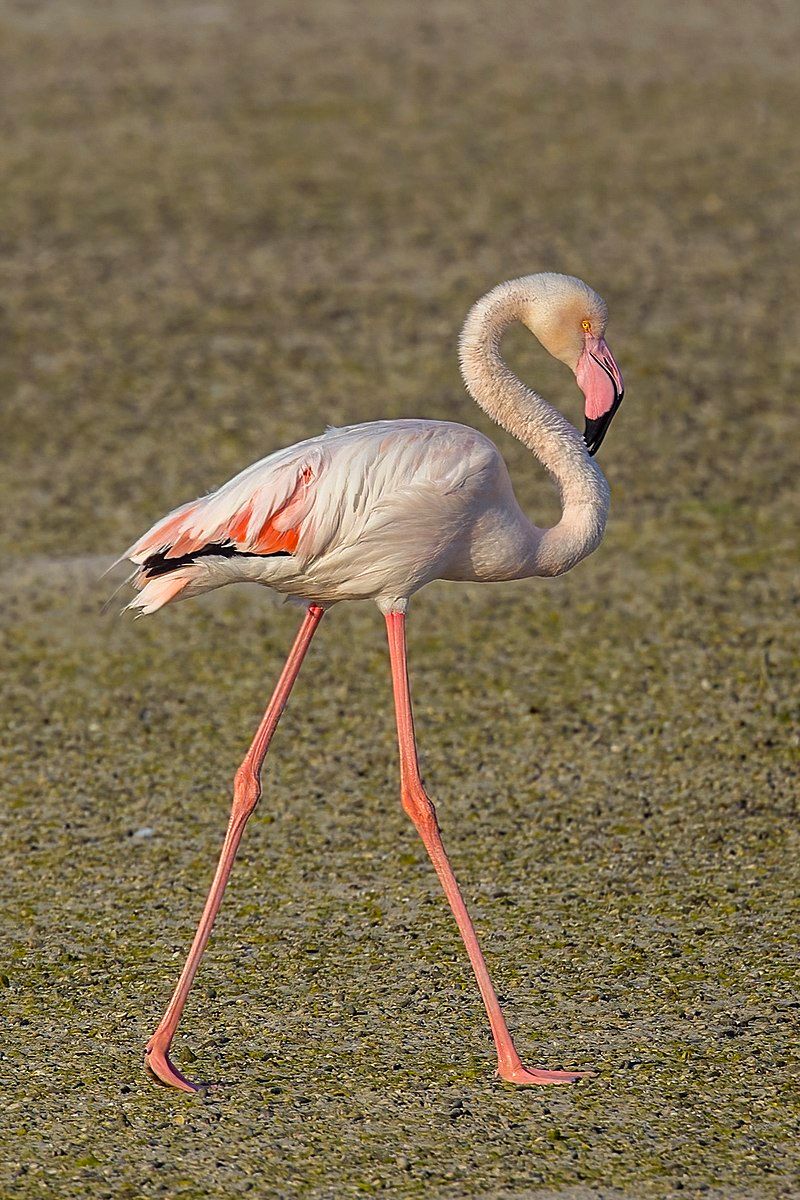
The greater flamingo is the most widespread and largest species of the flamingo family.
It can be found in many different areas around the world, with the most common locations being Northern and Sub-Saharan Africa, the Indian Subcontinent, the Middle East, the Levant, the Persian Gulf, the Gulf of Aden, the Red Sea, and the Mediterranean countries in Southern Europe. The greater flamingo is a beautiful bird that stands up to 1.2 m tall and can weigh up to 4.5 kg.
It is a long-legged bird with a long neck and a distinctive pink and white plumage.
Its wingspan can reach up to 1.5 m, making it the largest species of the flamingo family. The greater flamingo is well adapted to its environment and can be found in a variety of habitats, from shallow lagoons, shallow lakes, and mudflats, to coral reefs.
It is an omnivorous bird, feeding on a variety of aquatic and terrestrial organisms, including insects, crustaceans, mollusks, and small fish. The greater flamingo is a social bird that typically lives in large flocks.
The flocks can be up to thousands of birds and are often seen in large concentrations when looking for food.
Flamingos are also known to perform elaborate courtship displays to attract mates. The greater flamingo is an important species in many ecosystems and is considered a keystone species due to its role in dispersing nutrients and stimulating primary production.
It is also a popular species among birdwatchers, and its striking pink and white plumage makes it a beautiful sight to behold.
| Kingdom | Animalia |
| Phylum | Chordata |
| Class | Aves |
| Order | Phoenicopteriformes |
| Family | Phoenicopteridae |
| Genus | Phoenicopterus |
| Species | P. roseus |
Conclusion
Trincomalee is a great place for birders to observe a variety of birds. From migratory waterbirds to endemic species, Trincomalee is home to a diverse array of bird species.
Birders can enjoy the sight of both common and rare species in the area, making Trincomalee an ideal destination for birders.
With its delightful beaches and lush forests, Trincomalee is not only a paradise for birds but also for birders.